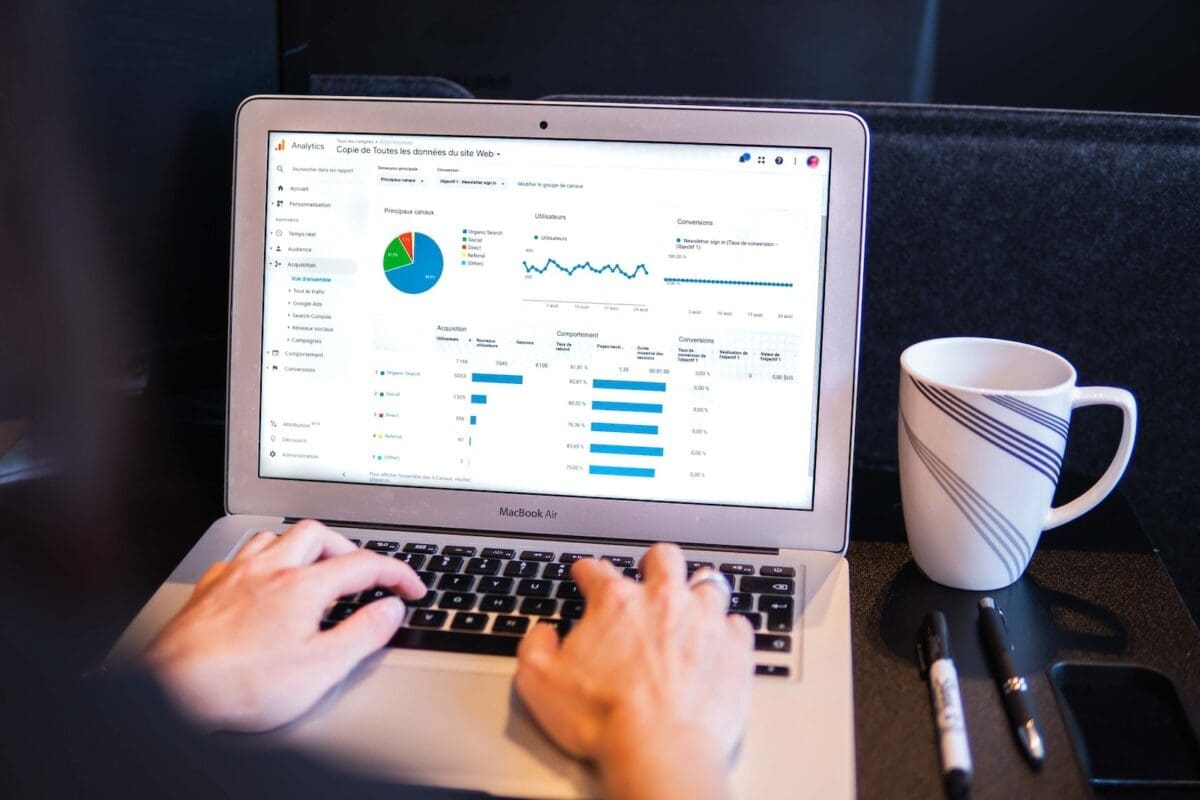Marketing begins at the top of the sales funnel and progresses downward. However, it is crucial for marketing to also nurture and qualify leads. This involves encouraging them to engage with content until they reach a state of readiness for sales. Customers in the interest and desire phase find themselves in the middle of the funnel. This indicates their active engagement with your brand or product. However, they might still need more information before acting. This is where the middle of the funnel comes into play. You may also be interested in reading Master the Funnel to Ace Performance Marketing! and The Ultimate Guide to Digital Marketing Funnel Design.
It is easy to overlook the middle of the funnel. Since, it needs businesses to prioritise quality, quantity, speed, customer experience, and more. However, it is where you extend engagement and build trust-based relationships with your already captured audience.
This article will delve into different components of the middle stage of the funnel. Further, it will provide suggestions on how to navigate this stage.
What is Middle-of-Funnel Marketing?

It comprises marketing initiatives that are used to match the requirements and problems of visitors. This is achieved through delivering right products and services. This is where customers begin to grasp the value of your product or service. During this stage, you can connect with potential customers and start building a relationship.
The middle of the funnel is not just aimed at acquiring new customers. It is also about retaining current customers. You build long-term relationships and longer engagement with your already-captured audience. Marketers distribute content to understand buyers’ wants and gauge their level of purchase readiness. The goal is to move them along the purchase path.
Why do you need middle-of-the-funnel marketing?

The middle of the funnel marketing is a stage in the acquisition funnel. Prospective customers, at this point, are aware of their problems and the solutions they need. Typically, they have identified a product or service but haven’t decided whether to make a purchase.
· Understand and Connect with the audience
Middle-of-the-funnel digital marketing strategies are also referred to as “product-centric marketing.” At this stage, marketers shift their focus to what they can do for their prospects, not what they want from them. They acknowledge the pain points and the associated consequences. Afterward, they highlight their product as a potential remedy.
· Customer Trust
Middle-of-the-funnel marketing is an effective approach to getting your product in front of your target audience. It provides proof of a product’s advantages over its competitors. You can use customer testimonials, case studies, and product comparisons, for instance. It also ensures that the product/service has been tested by real people.
This offers customers a more affordable method to analyze whether the product works or not. Therefore, can save money without spending millions.
· Lead Prospects down the funnel
To close the sale, brands must nurture leads in the mid-funnel. The middle of the funnel is the persuasion phase. Therefore, brands should use their content to address problems before highlighting solutions.
Proven Middle-of-funnel Marketing Strategies

Your target clients are already interested in buying or something comparable at this point. Therefore, you must demonstrate your expertise and your ability to meet their needs. By offering answers during their search journey, you can build credibility.
1. Customer Testimonials
Potential customers are likely to trust someone like themselves who had a pleasant experience with your product or service. Therefore, testimonials are a great way to earn that trust.
These can also be used on websites and in emails. Additionally, they can be printed out and given as gifts. They are particularly effective if you are selling something that requires some effort on the customer’s part. Weight loss products, for instance.
2. Case Studies
Case studies helps to demonstrate how your product/service solves problems for customers and clients. Therefore, making it easier for potential customers to relate better to the scenario presented.
It can also be used to explain how your product works and what makes it different from other related products. This allows you to show potential customers how their lives will improve.
3. Tutorials
Tutorials are a powerful way to show users what they are buying and how it can improve their lives. They can be in the form of a video tutorial or a step-by-step. Further, you can post “how-to” guide for using your product. However, you must be careful not to make tutorials too long or wordy. This helps ensure they do not seem like ads.
4. Gated Content
Gated content is a great way to generate high-quality leads. It can be an eBook, video, or email course, but it must be relevant to your company and products. Gating content is beneficial because it makes customers feel exclusive, engaged, and nurtures trust.
5. Product Landing Pages
Potential buyers are eager for product information in this stage of the marketing funnel. Create a clear, precise product landing page with all the necessary details. Include information from consumer surveys, product testing, FAQs, and statistical data for strong empirical support. Additionally, if possible, provide ample photographs and video content.
Middle-of-funnel Marketing Do’s and Don’ts

In the middle of the funnel, you have a lot of freedom to experiment with marketing strategies that do not require a large investment in time and money upfront like traditional advertising would. You can use this freedom to test how customers respond to diverse types of content and messaging and see what works best for your business.
Here are some tips for starting out:
· Create solution-oriented content
In the middle of the funnel, content is a blend of information and action suggestions. When you create solution-focused content, you’re not just telling them how to succeed; you’re showing them how.
· Use customer validation
This is where you should focus on building trust, credibility, and reliability among customers. This means that they should feel confident that they are buying from a brand they can trust. It is also where you need to use testimonials, case studies, etc. to validate your reliability.
· Spend more time on content production
In content creation, you must focus on quality. Invest time in crafting articles, videos, and blog posts that capture your readers’ attention. Ensure the content is relevant to their industry or job role and interesting enough to keep them engaged. Also, include a call-to-action in every piece so readers know what to do next for added value from their reading time.
· Do not solely focus on problem areas
The problem with focusing on pain points is that it can lead to a one-dimensional solution. This way you may end up with an over-simplified solution that does not work very well. Alternatively, you can add features that make your product more attractive to potential buyers. For example, if you are selling a product for people who want to lose weight, do not just focus on the pain point of having a tough time losing weight. You can add a feature that lets them track their progress over time and keep track of their diet and exercise regimen.
· Do not forget to bring in outside content support
The last thing you want to do is waste your time, only to find out that no one has read it. A better approach is to bring in external content support. This can be from an agency or consultant who can help you without having you to worry about those issues.
How to bring Brand and Performance together in the Mid-funnel?

Traditionally, brand and performance marketing teams have focused on different parts of the consumer journey. While one focused on upper, performance marketing focused on lower part of the funnel. As result, middle of the funnel has received less importance.
However, this is the part where the most complicated transaction occurs. This is where consumers are looking for a solution to their problem. Therefore, it requires brand and marketing teams to work together in a seamless way:
- Put the right content in front of the right people at the right time.
- Focus on one-to-one marketing, not mass marketing.
- Invest in research to understand where your target audiences are in the consumer journey.
- Use data to show consumers why they should choose your brand over others.
- Use storytelling, video, and other visual elements to engage users.
- Use mobile apps and other digital tools to enhance customer experiences.
- Be responsive and timely, as an organisation or as a brand.
- Manage expectations of what you can deliver as an organisation or as a brand.
- Get creative with how you measure success (or failure).
The mid-funnel is where brands have the opportunity to engage with consumers in a meaningful way. Brand and performance marketers should collaborate to create content and experiences that resonate with this audience. Additionally, they should share information about their customers to benefit from each other’s insights.
Measuring Middle of Funnel Success
Open rates
Open rates are crucial in your email marketing campaign. They represent the percentage of people who open your emails, indicating their engagement with your brand. A higher open rate suggests that potential customers are more likely to read and respond to your message.
Lead Volume
Lead volumes are the number of leads generated by your marketing and sales efforts. Lead volume is crucial. It directly affects profitability by influencing the size of your customer base. It also impacts the amount of revenue you generate from each customer.
Lead Score
Lead scoring measures the likelihood that a lead will convert into a paying customer. It considers the entire customer journey, from the moment you first speak to when they become an active customer.
Conversion rates
Conversion rates are the number of visitors who complete a specific action. It is an important metric since it helps you understand how well you are doing. It, further, helps understand which channels are performing best, and whether you need to change up.
Click-through rates
Click-through rates (CTRs) are the percentage of people who click through to a website from an ad. The higher the click-through rate, the more likely your ad is to convert.
In essence, a mid-funnel campaign needs to focus on creating value for customers. This can be achieved by offering solutions that address their pain points. The goal is to lead customer journeys, down the path toward purchase decisions.
If you want additional information and guidance on how to use the funnel marketing approach to benefit your brand, browse our articles, Understanding Top of the Funnel Marketing and Performance Marketing at the Bottom of the Funnel.




